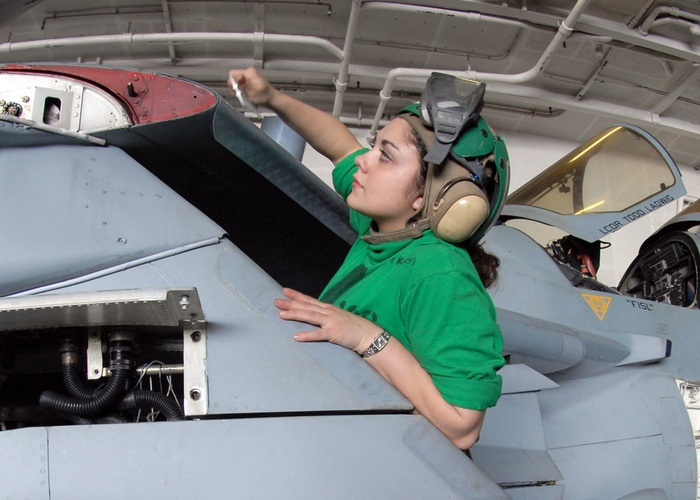Whether an old airframe is on the edge of retirement or a brand-new jet, a robust logistics chain, and parts supply are paramount.
Greenwood Aerospace is your leader in government procurement, aircraft and parts storage and distribution, and military and defense contracting. Our expertise and services include the following:
Procurement of
- Fixed-wing aircraft and associated support
- Aircraft parts & accessories
- Military aircraft parts
- Storage and distribution of parts and supplies to your organization. We will operate as your private warehouse and distribution network.
This is only a sample of our services and capabilities.
Learn more about our services for the defense and military industries. For additional information, you can also contact us here or by emailing sales@governmentprocurement.com.
Does The Beechcraft T-6 Texan Have An Ejection Seat?
If you’ve ever looked up when you heard that PT6A whine and saw a T-6A Texan II flying overhead, you’ve probably wondered whether it has an ejection seat. Well, the answer is yes! Actually, it has two ejection seats in tandem; one for the student pilot and one for the instructor pilot. Here’s the thing: no matter what airframe a military pilot ends up flying, whether fighter track, cargo, surveillance, or what have you, they all start in the exact same place. For the Air Force, that is Undergraduate Pilot Training, and for all of the wings of gold (Navy, Marine Corps, Coast Guard), it is Naval Flight School. Since the Air Force and the Navy both use the T-6 Texan exclusively in their introductory pilot courses. And contact/acrobatics training is a core competence of this basic flying.

History Of Ejection Seats In Aircraft
Military technology advanced quickly during and shortly after World War II. The jet age began during this period, but most aircraft used in World War II were not jets. But the aircraft's performance grew exponentially during this time, even though the aircraft were piston-driven. One thing that became evident with the advances in aircraft technology and performance was the need for an egress system. Although it wasn’t just high performance that dictated the demand, aircrews could not egress stricken aircraft because of various factors. Centrifugal forces would pin aircrews in place, where an ejection seat would have allowed them to exit the aircraft safely. But the jets were the turning point. At the speeds jets travel and operate, the odds of being able to egress effectively out of one is slim at best. And it happened very fast; the F-4 Phantom, a jet capable of exceeding 1,000mph, went into production in 1958, just thirteen short years after the end of World War II.

More About The Mk 16 US16LA Ejection Seat For T-6 Texan II
But back to the Texan. The T-6 Texan II has a Martin-Baker MK16-US16LA. As we mentioned earlier, all pilots, regardless of track selection, will do the same rudimentary flight training: spins, basic acro, formation, and so on. Unfortunately, these maneuvers are inherently dangerous, and training aircraft do crash on occasion. The Martin-Baker MK16-US16LA was tailored specifically for the T-6 Texan. Unlike other ejection seats commonly used in tactical aircraft (The ACES II is in most American fighters and the B-1B bomber), the MK16 works for the demands of a light aircraft that is relatively low speed. The ACES II will take aircrew out of a stricken aircraft at any altitude, at high airspeeds. While this is necessary for a fighter aircraft, there are better fits for a propeller-driven trainer. The US16LA is a more compact assembly made for the demands of a training aircraft. In addition, it is designed for increased comfort levels for pilots. The US16LA is what is known as a zero-zero ejection seat, meaning it can be fired on the ground at zero knots in a level attitude, reach a safe altitude, and engage the parachute. Once the pilot initiates the ejection sequence, the ejection seat does the rest. This is particularly important if the pilot is knocked unconscious during ejection.
The ACME T-6 Dynamic Motion Seat (High-fidelity Replica)
Ejection seat repair techs are the unsung heroes of the egress world. These seats are quite reliable, but they are not immune to the rigors of poor maintenance. An inadequately maintained ejection seat is a hazard to all parties involved. One of the best ways to keep the egress system healthy is to understand the ejection seat system. This is a tall order, though; there is a high level of risk because an ejection seat is live once somebody pulls the pins; ejection seats are life savers, but they are also one of the most dangerous parts of an airplane to work around. Once that yellow lever is pulled, there is no going back. This is why the ACME T-6 Dynamic Motion Seat exists. It is a high-fidelity exact replica of the US16LA. There are two reasons for this:
- For aircrew familiarization.
- For maintenance familiarization.
This is a great opportunity for T-6 pilots to learn all of the exact locations of critical components of the US16LA, including
- Safety pins
- Levers
- Controls
- Buckles
- Harnesses
- Any other attachments that might be used
There is a definite risk when teaching ejection seat safety to student pilots on a live seat, namely that they are learning to safe a live ejection seat. If they were to happen to engage it while attempting to disarm that seat, the results would be catastrophic. Again, the same applies to technicians, not just egress technicians. All systems specialists and generalists receive egress safetying training (the process of safing the ejection seats). An advanced mock-up seat is the safest way to provide this training; instructors can do it in the classroom environment instead of on the flightline.
Features And Capabilities Of The Beechcraft T-6 Texan II
So what makes the T-6 Texan II such a great fit for primary flight instruction? Because it was made for that specific purpose. Every part of the design was done to create an ideal platform for primary and intermediate training. Fully acrobatic, it flies contact extremely well. Operating the PT6A-68 turboprop, the T-6 Texan II produces 1,100shp, giving it tremendous performance while having a fuel burn less than half of the T-37 Tweet that it replaced. The T-6 is equipped with an advanced avionics suite and a glass cockpit that is perfect for instrument basic but is also a great segue to advanced aircraft tracks.

Different Variants of The Beechcraft T-6 Texan II
There are three variants of the Texan II right now: the Alpha, Bravo, and Charlie models. The Alpha model is the Air Force’s model of the Texan and has been in use for pilot training since 2001. The T-6B is an upgraded version of the Alpha model with an improved digital glass cockpit that includes a Heads-Up Display (HUD), six MFDs, and Hands on Throttle and Stick. The Navy received its last Bravos in 2014. The Charlie model is the most visually different variant of the Texans, equipped with wing hard points. This version of the Texan was intended primarily for foreign sales, where our allies deployed weapons packages on them. Otherwise, it is a standard Bravo model.
Interesting T-6 Texan II Facts
The T-6 designated the Joint Primary Aircraft Training System, was designed to give Air Force UPT and Naval Flight School a shared training platform. Since the Navy does not do carrier training during the T-6 portion of training, it makes sense to share a standard airframe. Unfortunately, both the T-37 Tweet (Air Force) and T-34 Mentor (Navy) were getting old together, and the T-34 was a much lower performance than the T-6 Texan, producing only 550shp instead of 1,100shp. Also, the instruments on both retired aircraft were fundamental and rudimentary, known as “steam gauges.” Texans are also widely used across the globe and are actively being procured for new sales by a number of countries.
Parting Thoughts
The T-6 is becoming the mainstay of military training worldwide. It is cost-effective, efficient, high-performance, and adaptable to other missions should they arise. Today we’ve taken a look at the egress system of the T-6, a system that just two months ago saved the lives of two naval aviators. Just like any area of the aircraft, ejection seats require regular upkeep and maintenance. Greenwood Aerospace is your #1 source for procuring T-6 parts, from propellor to tail, and everything in between.


.svg)


.png)


